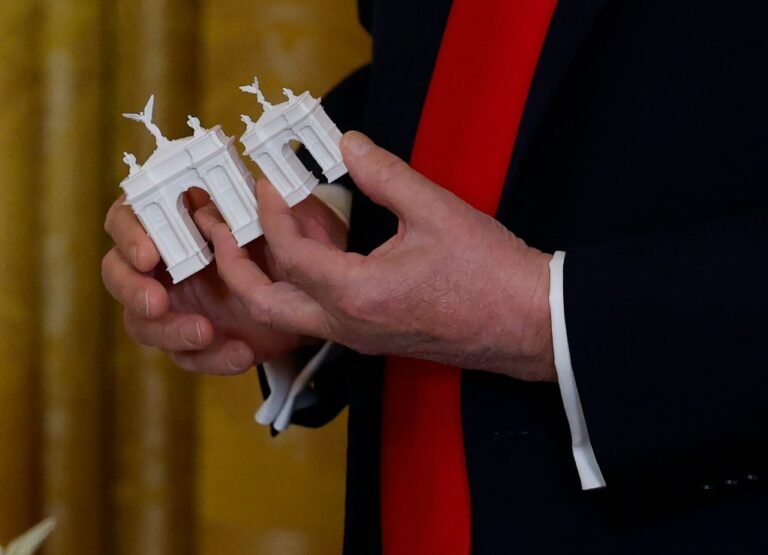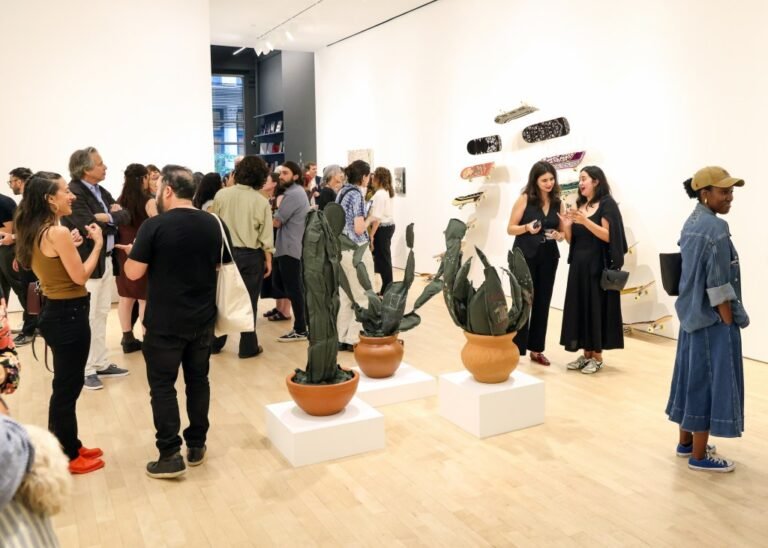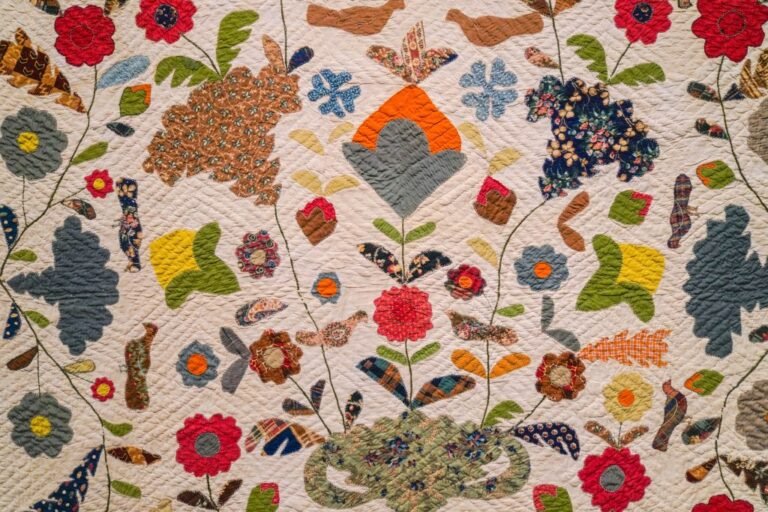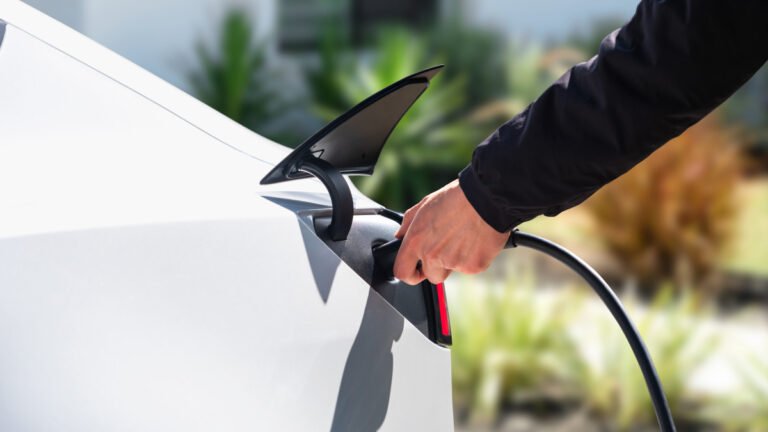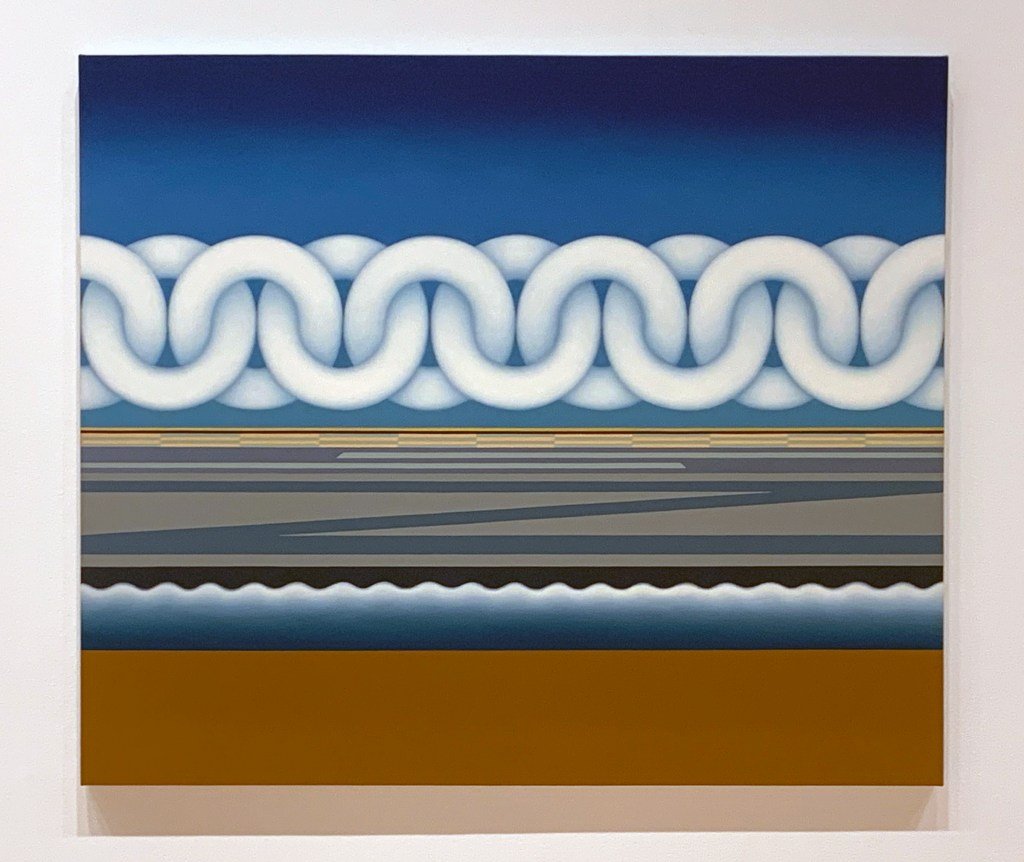

What makes a seascape? In this focus exhibition of 10 recent paintings at the Museum of Contemporary Art, veteran Los Angeles artist Takako Yamaguchi subverts the traditional notion. Rather than base her imagery on observations of the natural world, she takes the opposite approach and practices what she calls “abstraction in reverse.” Recognizing that early European and American Modernists derived their geometric or organic forms from nature, she instead begins by using abstract shapes to construct calm seascapes, with horizon lines bisecting each composition into two equal sections. She superimposes additional abstract imagery reflecting her love of pattern and decoration, fashion, and her concept of beauty, some loaded with symbolic associations.
In “Stitch” (2023), a brown rectangle suggests the presence of a beachfront, the ocean is divided into horizontal registers made up of undulating lines and interlocking zigzags, and clouds have been replaced by an expansive braid that the walls points out recalls a close-up of those feminized materials of hair or fabric. Easily perceived as separate elements, Yamaguchi’s abstract and figurative configurations do not really interact. Rather, they peacefully coexist as two worlds in one, as nature and culture.

Yamaguchi’s image lexicon also includes architectural columns, fountains, and geometric patterns derived from historical Japanese art, as in Ukiyo-e prints or folding screens. The latter influence is particularly evident in “Trap” (2024), where swirling cloud formations inhabit the sky and rhythmic waves swirl in the center like the codependent halves of a yin-yang symbol. A similar effect is at play in “Accomplice” (2025), where two Greek columns have been whimsically anthropomorphized such that they appear to be snuggling.
Indeed, Yamaguchi is at her best when letting her imagination run rampant. This might be most clearly seen in her fantastic biomorphic creatures that seem to have risen from the ocean depths, blocking our views of distant horizons. Hybrids of architectural motifs and feminine symbols, such as flowing hair or wombs, the vibrant, energetic biomorphs in “Guide” (2023), “Pilot” (2024), and “Plenum” (2024) occupy entire foregrounds, commanding our attention like actors on a stage, the seascape behind functioning like a scenic backdrop. Delightfully surreal, these creatures evoke associations with Japanese anime and classic horror films. By contrast, the decorative structures in “Procession” and “Font” (both 2024) function more like gateways through which we can envision journeying across the waters.
Melding abstraction with figuration through an idiosyncratic language that draws from Euroamerican Modernism and Japanese woodblock prints and pop culture alike, Yamaguchi effectively liberates herself from such distinctions, creating fresh compositions that are at once serene and animated.



MOCA Focus: Takako Yamaguchi continues at the Museum of Contemporary Art, Los Angeles (250 South Grand Avenue, Downtown Los Angeles) through January 4, 2026. The exhibition was curated by Anna Katz and Emilia Nicholson-Fajardo.
